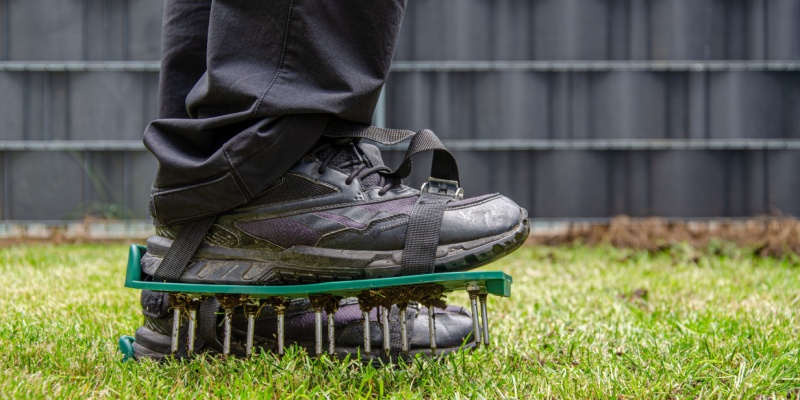Achieving that perfect lawn often requires more than just regular mowing and watering. One important but often overlooked aspect of lawn care is aeration. So, what exactly is lawn aeration, and why is it so crucial for the health of your lawn? In this blog post, we’ll dive into the purpose of a lawn aeration treatment and how it can benefit your yard.
Understanding Lawn Aeration
Lawn aeration involves perforating the soil with small holes to allow air, water, and nutrients to penetrate the grass roots. This process helps to alleviate soil compaction, which can hinder root growth and lead to a less healthy lawn. There are two main types of aeration: core aeration and spike aeration. Core aeration removes small plugs of soil from the ground, while spike aeration simply pokes holes into the soil without removing any material.
Benefits of Lawn Aeration
1. Enhanced Nutrient Uptake:
One of the primary benefits of lawn aeration is improved nutrient uptake. When soil becomes compacted, it can restrict the movement of essential nutrients like nitrogen, phosphorus, and potassium. By creating small holes in the soil, aeration allows these nutrients to reach the grass roots more effectively. This leads to healthier growth and a more vibrant lawn.
2. Improved Air Exchange:
Grass roots need oxygen to thrive, and compacted soil can limit the amount of air reaching them. Aeration facilitates better air exchange between the soil and atmosphere, ensuring that your grass receives the oxygen it needs for optimal growth. This is particularly important in heavy clay soils that are prone to compaction.
3. Better Water Absorption:
Compacted soil can also impede water absorption, leading to runoff and wasted water. Aerating your lawn helps to break up dense soil particles, allowing water to penetrate more deeply into the root zone. This not only reduces water waste but also ensures that your grass receives adequate hydration during dry periods.
4. Reduced Thatch Buildup:
Thatch is a layer of dead grass and organic matter that accumulates on the surface of your lawn. While some thatch is normal, excessive buildup can create a barrier that prevents water, air, and nutrients from reaching the soil. Aeration helps to break down this layer by promoting microbial activity that decomposes organic matter faster.
5. Enhanced Root Development:
Healthy root systems are essential for a resilient lawn that can withstand stress from drought, pests, and foot traffic. Aeration encourages deeper root growth by loosening compacted soil and providing an environment where roots can expand more freely. Deeper roots mean stronger grass that is better equipped to handle environmental challenges.
When Should You Aerate Your Lawn?
The timing of aeration depends on the type of grass you have. Cool-season grasses like Kentucky bluegrass or fescue benefit most from aeration in early spring or fall when they are actively growing. Warm-season grasses such as Bermuda or zoysia should be aerated in late spring or early summer during their peak growing season.
DIY vs Professional Aeration
While it’s possible to rent an aerator and perform the task yourself, hiring a professional service can save you time and ensure optimal results. Professionals have access to high-quality equipment and possess the expertise needed to assess your lawn’s specific needs. They can also combine aeration with other treatments like overseeding or fertilization for comprehensive lawn care.
Lawn aeration is a vital treatment that addresses several underlying issues affecting your grass’s health and appearance. By improving nutrient uptake, air exchange, water absorption, reducing thatch buildup, and promoting root development, aeration lays the foundation for a thriving lawn. Whether you choose to tackle it yourself or enlist professional help, incorporating regular aeration into your lawn care routine will yield long-lasting benefits for your outdoor space.

